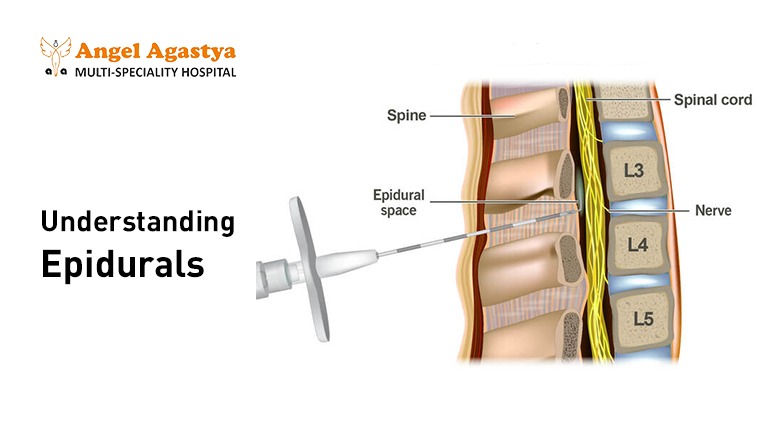Introduction:

Epidural Delivery: Demystifying the Option
Let’s be honest: childbirth is an incredible experience, but it can also involve significant discomfort. They are a common pain-relief option during labor, but there’s often confusion and unanswered questions. This guide explores five effective ways to navigate delivery with it, empowering you to make informed decisions and approach birth with confidence.
Understanding Epidurals:

The Epidural Explained:
An epidural is a regional anesthetic medication that reduces pain during labor. A thin tube (catheter) is inserted into your lower back near the spinal cord. The medication numbs the nerves that carry pain signals from your uterus to your brain. They are highly effective in reducing pain intensity, allowing you to relax and focus on labor.
Benefits and Considerations:
Benefits: Epidurals offer several advantages:
- Pain Relief: The most significant benefit is significant pain reduction during labor contractions.
- Relaxation: Reduced pain can promote relaxation, allowing you to conserve energy for pushing.
- Anxiety Reduction: Knowing you have pain relief readily available can ease anxiety about childbirth.

Considerations:
- Potential Side Effects: Like any medication, they can have side effects, including low blood pressure, temporary difficulty urinating, and a headache. Your doctor will discuss these in detail.
- Pushing Ability: They might affect your pushing ability in some cases. However, various techniques can help you deliver your baby effectively, even with it.
- Not for Everyone: They are not mandatory. Discuss your preferences for pain management with your doctor to determine if it aligns with your birth plan.
Every Birth is Unique: Remember, every birth experience is unique. There’s no pressure to choose. Explore the various birthing options available, including natural pain-relief techniques, and choose what feels right for you.
Preparing for an Epidural Delivery:
Knowledge is Power: Educate yourself about the stages of labor, the epidural procedure, and potential side effects. The more you know, the more prepared and confident you’ll feel during delivery. Resources like childbirth education classes and books can be immensely helpful.

Building a Strong Support System: Surround yourself with a team you trust – your partner, a doula, or a midwife. Having a strong support system can significantly decrease anxiety and provide emotional and physical support during labor, even with it. Discuss your birth plan and preferences with your support team beforehand.
Open Communication: Discuss your thoughts on it with your doctor or midwife early in your pregnancy. Communicate openly about your preferences and comfort level throughout labor. Don’t hesitate to ask questions and advocate for your needs. Your doctor is there to guide you and ensure a safe and positive birth experience.
Navigating Delivery with an Epidural:
Setting Expectations: Discuss realistic expectations for an epidural delivery with your doctor. While it reduces pain, you might still feel some pressure or cramping, especially during contractions. You’ll likely remain aware of your surroundings and actively participate in your birth. It can take some time to take full effect, so be patient.

The Epidural Process: Its placement process is generally well-tolerated. You’ll likely sit or lie on your side while a healthcare professional numbs a small area on your lower back with a local anesthetic. A thin tube (catheter) is then inserted with minimal discomfort and secured to your back. This medication is slowly delivered through the catheter.
Maintaining Control: Reassure yourself that even with it, you’re still in control. You can still feel some sensations and actively participate in your birth experience. Discuss birthing positions and pushing techniques with your doctor beforehand. You can request adjustments to this medication if needed.
Demystifying Delivery: 3 Common Epidural Myths Debunked
Considering an epidural for pain management during childbirth? It’s a big decision, and you deserve to have all the facts! Epidurals are a popular pain management option, but misinformation can cloud your judgment. Let’s debunk 3 common epidural myths and empower you to make an informed choice for your birth journey.
Myth #1: Epidurals Cause Permanent Back Pain (Busted!)
The fear of long-term back pain is a major concern for many women considering epidurals. However, modern epidural techniques prioritize minimizing this risk. Studies have shown that the risk of long-term backache associated with epidurals is extremely low, significantly lower than the discomfort of unmanaged labor pains. Epidural needles are incredibly thin and target specific nerve pathways for pain relief, with minimal impact on surrounding tissues. Additionally, anesthesiologists use ultrasound guidance for precise placement, further reducing the risk of complications.
Myth #2: Epidurals Paralyze You (Nope!)
Another common misconception is that epidurals leave you paralyzed or unable to move your legs. This is simply not true! Epidurals target specific nerves responsible for pain transmission, leaving your motor function largely intact. While some temporary numbness in the legs is a common side effect, it usually doesn’t affect your ability to move or participate actively in childbirth. In fact, some women report feeling more relaxed and in control after receiving an epidural, allowing them to focus their energy on pushing during delivery.
Myth #3: Epidurals Harm Your Baby (Not True!)
Pregnant women often worry about the potential impact of epidural medication on their baby. The good news is that the medication used in epidurals stays localized in the area around the spinal cord and has absolute NO impact on the baby. Strict dosing guidelines ensure that the medication reaches the intended nerves for pain relief without affecting the baby. Additionally, research suggests that a relaxed mother experiencing less pain can lead to a smoother delivery for both mom and baby. Reduced stress hormones can potentially benefit the baby and contribute to a more positive birth experience.
Remember, Knowledge is Power!
By understanding the facts about epidurals, you can make an informed decision that aligns with your birth plan and pain management preferences. Discuss your options with your doctor or midwife and ask any questions you may have. Ultimately, the choice of whether or not to receive an epidural is a personal one. There’s no right or wrong answer – the best option is the one that makes you feel most comfortable and empowered during your childbirth journey.
Patients Rewiews About Painless Delivery
Summary:
They are a common pain-relief option during childbirth, but they can come with confusion and unanswered questions. This guide empowers you to navigate delivery with an epidural.
Understanding Epidurals:
• They are medications that numb the nerves, reducing pain during labor.
• They offer significant pain relief, relaxation, and potentially reduced anxiety.
• There are potential side effects like low blood pressure and temporary difficulty urinating.
• They might affect pushing ability, but techniques exist to help you deliver effectively.
• Remember, an epidural is not mandatory. Explore all birthing options and choose what feels right for you.
Preparing for an Epidural Delivery:
• Knowledge empowers you! Educate yourself about labor stages, the epidural procedure, and potential side effects.
• Build a strong support system with your partner, doula, or midwife for emotional and physical support during labor.
• Open communication with your doctor is key. Discuss your thoughts on epidurals and preferences for pain management.
Navigating Delivery with an Epidural:
• Set realistic expectations. Epidurals reduce pain, but you might still feel some pressure or cramping.
• The epidural placement process involves numbing a small area on your back and inserting a thin tube (catheter) for medication delivery.
• You remain in control! You can still feel sensations and actively participate in your birth experience.
Creating a Positive Birth Environment:
• A calm and positive birthing environment with dimmed lights, calming music, and loved ones can enhance your experience.
• Visualization exercises practiced throughout pregnancy can help manage anxiety and promote calmness during labor.
• Open communication with your care team is crucial. Don’t hesitate to ask questions or advocate for your needs.
By understanding epidurals, preparing effectively, and creating a positive environment, you can approach delivery with confidence, empowered to make informed decisions for a positive birth experience.
FAQs:
1. Is an epidural right for me?
This is a personal decision. Discuss the pros and cons of epidurals with your doctor to determine if it aligns with your birth plan and pain management preferences.
2. What are the risks associated with epidurals?
While generally safe, epidurals can have some side effects like low blood pressure, temporary difficulty urinating, and a headache. Your doctor will explain these risks in detail.
3. Can I still push with an epidural?
An epidural might affect your pushing ability in some cases. However, various techniques can help you deliver your baby effectively, even with it. Your doctor can discuss these techniques with you beforehand.
4. What if the epidural doesn’t work completely?
Epidural medication can be adjusted to improve pain relief. If it doesn’t work as expected, your doctor can discuss alternative pain management options with you.
5. Can I have an epidural if I have a history of back problems?
Discuss your medical history with your doctor. In some cases with specific back issues, they might not be recommended.
6. Will an epidural affect my baby?
Epidural medication is localized and generally doesn’t reach the baby in significant amounts. However, discuss any concerns with your doctor.
7. What happens if the epidural placement fails?
Epidural placement is a routine procedure with a high success rate. However, in rare cases, it might not work effectively. Your doctor can attempt to reposition it or discuss alternative pain management options.
8. Is it safe to have an epidural during a C-section?
Yes, they are commonly used during C-sections to provide anesthesia (numbness) in the lower half of your body.
9. Can I refuse an epidural after it’s been placed?
Absolutely. You have the right to refuse any medical intervention at any time during labor. You can choose to continue with it or request its removal.
10. What are some additional pain management options during labor?
Several options exist, including nitrous oxide (laughing gas), intravenous (IV) pain medication, massage, and various birthing positions. Discuss these options with your doctor to find what might work best for you.


Thanks for debunking the myths surrounding epidurals! It’s crucial to separate fact from fiction, especially when it comes to such an important aspect of childbirth. Understanding the benefits of epidurals can empower expectant parents to make informed decisions about their birthing experience. Great job shedding light on this topic!
You’re welcome! Absolutely, knowledge is power, especially when it comes to making decisions about childbirth. It’s fantastic to see accurate information shared to help expectant parents navigate their options confidently. Let’s keep spreading awareness!
thank you very much.
Magnificent beat I would like to apprentice while you amend your site how can i subscribe for a blog web site The account helped me a acceptable deal I had been a little bit acquainted of this your broadcast offered bright clear idea